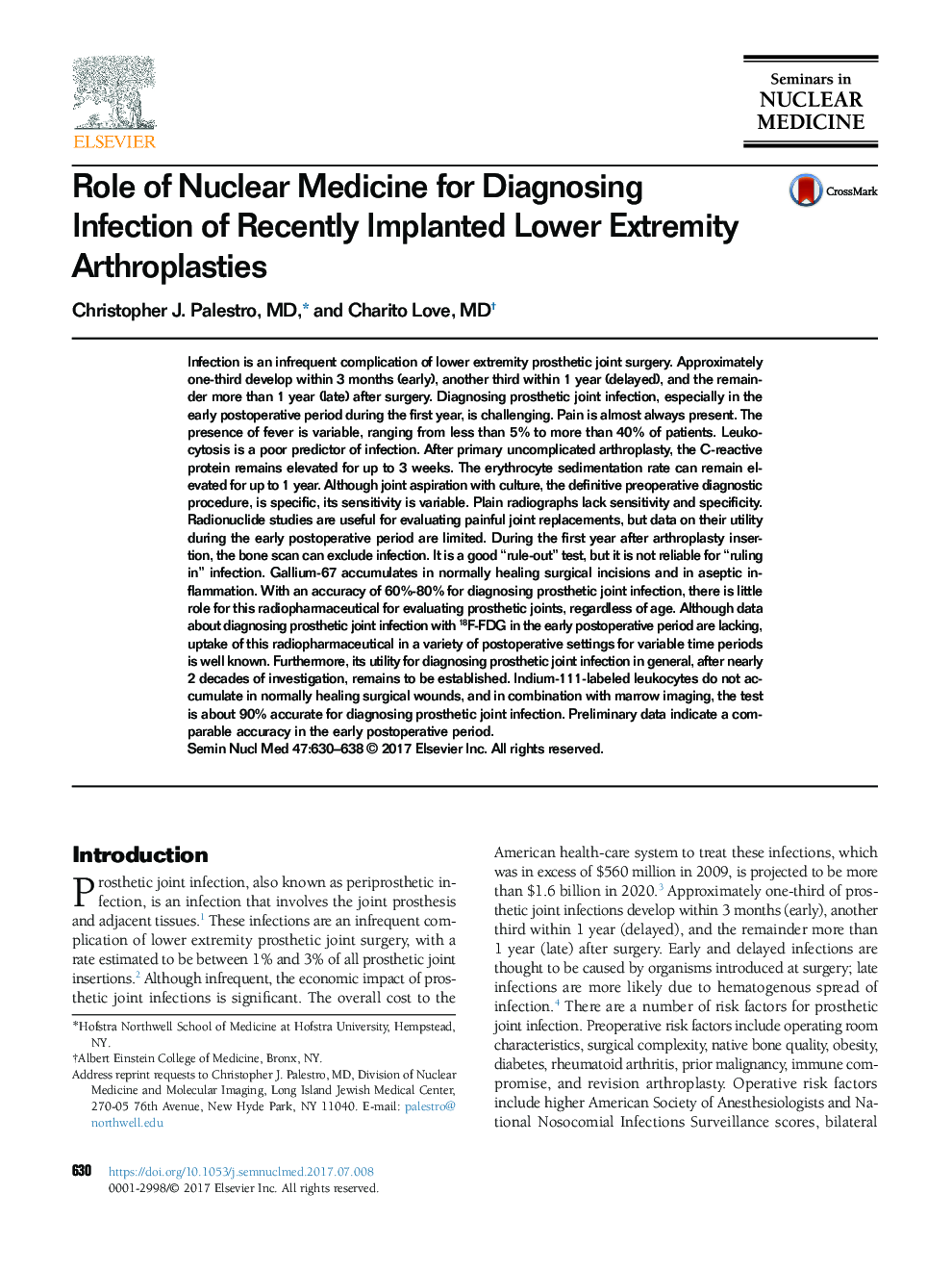| کد مقاله | کد نشریه | سال انتشار | مقاله انگلیسی | نسخه تمام متن |
|---|---|---|---|---|
| 5728315 | 1610602 | 2017 | 9 صفحه PDF | دانلود رایگان |
Infection is an infrequent complication of lower extremity prosthetic joint surgery. Approximately one-third develop within 3 months (early), another third within 1 year (delayed), and the remainder more than 1 year (late) after surgery. Diagnosing prosthetic joint infection, especially in the early postoperative period during the first year, is challenging. Pain is almost always present. The presence of fever is variable, ranging from less than 5% to more than 40% of patients. Leukocytosis is a poor predictor of infection. After primary uncomplicated arthroplasty, the C-reactive protein remains elevated for up to 3 weeks. The erythrocyte sedimentation rate can remain elevated for up to 1 year. Although joint aspiration with culture, the definitive preoperative diagnostic procedure, is specific, its sensitivity is variable. Plain radiographs lack sensitivity and specificity. Radionuclide studies are useful for evaluating painful joint replacements, but data on their utility during the early postoperative period are limited. During the first year after arthroplasty insertion, the bone scan can exclude infection. It is a good “rule-out” test, but it is not reliable for “ruling in” infection. Gallium-67 accumulates in normally healing surgical incisions and in aseptic inflammation. With an accuracy of 60%-80% for diagnosing prosthetic joint infection, there is little role for this radiopharmaceutical for evaluating prosthetic joints, regardless of age. Although data about diagnosing prosthetic joint infection with 18F-FDG in the early postoperative period are lacking, uptake of this radiopharmaceutical in a variety of postoperative settings for variable time periods is well known. Furthermore, its utility for diagnosing prosthetic joint infection in general, after nearly 2 decades of investigation, remains to be established. Indium-111-labeled leukocytes do not accumulate in normally healing surgical wounds, and in combination with marrow imaging, the test is about 90% accurate for diagnosing prosthetic joint infection. Preliminary data indicate a comparable accuracy in the early postoperative period.
Journal: Seminars in Nuclear Medicine - Volume 47, Issue 6, November 2017, Pages 630-638
